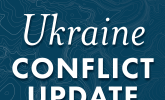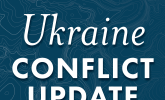Russian Offensive Campaign Assessment, March 7
March 7, 2022 - ISW Press
Russian forces are concentrating in the eastern, northwestern, and western outskirts of Kyiv for an assault on the capital in the coming 24-96 hours. The Russians are bringing up supplies and reinforcements as well as conducting artillery, air, and missile attacks to weaken defenses and intimidate defenders in advance of such an assault. It is too soon to gauge the likely effectiveness of any Russian attempt to complete the encirclement of Kyiv or to seize the city at this time. If Russian troops have been able to resupply, reorganize, and plan deliberate and coordinated simultaneous operations along the several axes of advance around and into the capital, they may be more successful in this operation than they have in previous undertakings. Operations near Kyiv in the past 72 hours have not offered enough evidence to evaluate that likelihood.










